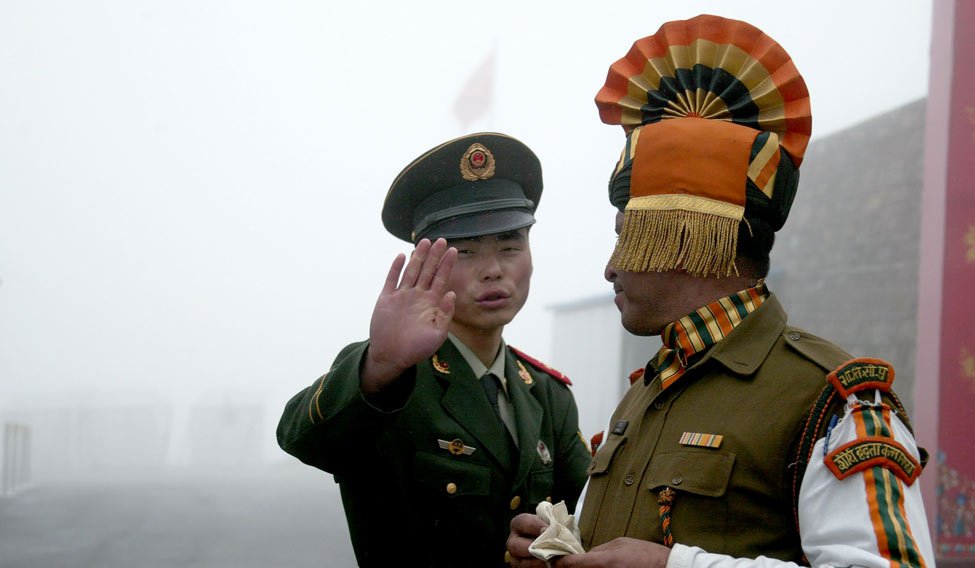No more pot-bellies underneath those khakis
Namrata Biji Ahuja
Pot-bellied in a khaki uniform? It will soon become a big no-no as the government is set to make physical fitness of Indian Police Service (IPS) officers mandatory for promotion in various ranks. Polish up, groom well and remain fit—this seems to be the new mantra of the Indian police force as the government lays special emphasis on ''smart policing'', in the literal and figurative sense. The All India service rules will be amended to incorporate physical fitness as a criteria for promotion of IPS officers in various grades. The home ministry has cleared the file and sent it to the department of personnel and training for issuing the notification, sources said.
Set parameters already exist in the central paramilitary forces defining what is 'physical fitness' and the procedure to examine the fitness of its officers. So far, promotions in various grades for IPS officers were not linked to fitness and even a physically unfit officer could qualify for a top policing job.
While these jobs meant leading from the front on all counts, so far only the requisite experience and individual qualifications were seen before an officer was promoted. But with the Modi government's stress on improving the image of its police forces, keeping its officers physically fit for a job has become a major area of concern.
The home ministry is paving the way for three changes in the All India Service Rules by amending Rule 3 of IPS (Pay) Rules. Apart from physical fitness, it will be mandatory to complete the stipulated number of years in service after probation to become eligible for a promotion. Thirdly, the focus is on “domain expertise” and an IPS officer will need to complete a specified domain expertise training programme of at least a week's duration to make them eligible for the rank of DIG, IG and ADG.
The need to improve the image of the police forces had also figured prominently in the meeting of top cops at the annual DGPs conference chaired by the prime minister, with both the PM and the Home Minister Rajnath Singh emphasising it.
Meanwhile, the government has asked the bureau of police research and training to develop new modules and training capsules for imparting soft skills to policemen on a war footing. Amongst them, the best could be chosen for tourist policing, an area which needs special focus with so many foreign tourists coming in, according to Home Minister Rajnath Singh who flagged the issue with the police top brass. Times are surely changing for the Indian policeman, and with it, a long overdue image overhaul.
When ancient culture goes digital
Vijaya Pushkarna
Culture is a subject that encompasses a huge part of the BJP government's agenda. Read it with ayurveda and yoga, it assumes even more importance. But, in keeping with the changing times, even the ancient has gone digital.
And so it is that the Central Council for Research in Ayurvedic Sciences (CCRAS) has been involved in collecting and digitising ancient manuspecripts from time to time. According to Shripad Yesso Naik, minister of state with independent charge for AYUSH, they have collected 3568 manuscripts so far, and 92 of them are palm leaf manuscripts. In all, 34 of these manuscripts have been converted into printed books, and four ayurvedic works into e-books.
De-escalation of Indian military presence at Doklam?
Rekha Dixit
Kitne aadmi the? What is the troop strength on the Indian side at Doklam? The “fact sheet” that China's ministry of foreign affairs released a few days ago made a curious statement. It said that on June 18, 2017, “over 270 border troops carrying weapons and two bulldozers” crossed the boundary in the Doklam region and advanced 100 metres into Chinese territory. It added that, at one point, there were around 400 Indian soldiers in the area. The sheet goes on to say that even by the end of July, there were “40 Indian border troops and one bulldozer illegally occupying the Chinese territory”.
The Chinese statement appears as if India has de-escalated military presence in the area under conflict. So, shouldn't China regard that as a good thing? India has remained mum on the matter. Though unofficially, there was talk that the ministry of defence had said there was no reduction of troop strength in the area, officially, the government has refused to say anything.
In fact, the only line that India continues to maintain is that it needs to find a diplomatic solution to the problem. China, too, says that it has shown “utmost goodwill and great restraint and sought to communicate with India through diplomatic channels to resolve the incident”. Sources in the external affairs ministry say that this present situation is indeed a headache, and different from border disputes of the past. There is a lot of headscratching going on at present to come up with a solution that allows both countries not to lose face.




